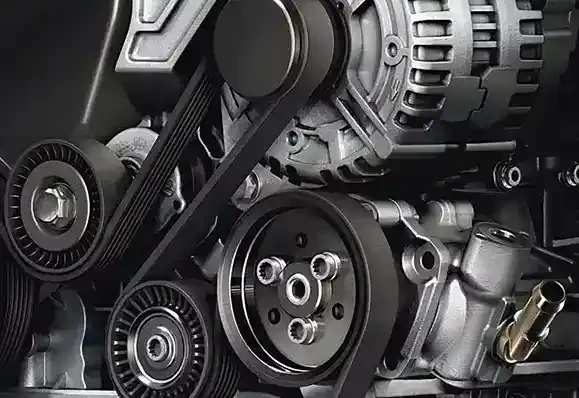- Arabic
- French
- Russian
- Spanish
- Portuguese
- Turkish
- Armenian
- English
- Albanian
- Amharic
- Azerbaijani
- Basque
- Belarusian
- Bengali
- Bosnian
- Bulgarian
- Catalan
- Cebuano
- Corsican
- Croatian
- Czech
- Danish
- Dutch
- Afrikaans
- Esperanto
- Estonian
- Finnish
- Frisian
- Galician
- Georgian
- German
- Greek
- Gujarati
- Haitian Creole
- hausa
- hawaiian
- Hebrew
- Hindi
- Miao
- Hungarian
- Icelandic
- igbo
- Indonesian
- irish
- Italian
- Japanese
- Javanese
- Kannada
- kazakh
- Khmer
- Rwandese
- Korean
- Kurdish
- Kyrgyz
- Lao
- Latin
- Latvian
- Lithuanian
- Luxembourgish
- Macedonian
- Malgashi
- Malay
- Malayalam
- Maltese
- Maori
- Marathi
- Mongolian
- Myanmar
- Nepali
- Norwegian
- Norwegian
- Occitan
- Pashto
- Persian
- Polish
- Punjabi
- Romanian
- Samoan
- Scottish Gaelic
- Serbian
- Sesotho
- Shona
- Sindhi
- Sinhala
- Slovak
- Slovenian
- Somali
- Sundanese
- Swahili
- Swedish
- Tagalog
- Tajik
- Tamil
- Tatar
- Telugu
- Thai
- Turkmen
- Ukrainian
- Urdu
- Uighur
- Uzbek
- Vietnamese
- Welsh
- Bantu
- Yiddish
- Yoruba
- Zulu
Pro . 10, 2024 19:09 Back to list
Understanding the Basics and Benefits of Belt Drive Systems in Machinery
The Mechanics and Applications of Belt Drive Systems
Belt drives are a fundamental component in many mechanical systems, serving as a critical means of transferring power from one shaft to another. Their efficient and versatile nature has made them a popular choice in various applications, from automotive engines to industrial machinery. Understanding the mechanics, advantages, and limitations of belt drives can help in appreciating their significance in modern engineering.
Mechanics of Belt Drives
At its core, a belt drive system consists of two or more pulleys connected by a flexible belt. The primary component, the belt, can be made of different materials such as rubber, leather, or synthetic composites, depending on the application and required durability. The pulleys, which can be either grooved or crowned, play a vital role in keeping the belt aligned and ensuring effective power transmission.
The principle of operation is straightforward when one pulley (the driver) rotates, it turns the belt, which in turn rotates the other pulley (the driven). The transmission of power occurs through friction between the belt and the pulleys. The effectiveness of this frictional contact depends on several factors, including the tension of the belt, the angle of contact on the pulleys, and the surface material of both the belt and pulleys.
One of the key metrics in evaluating belt drives is the horsepower rating, which helps determine how much power can be effectively transmitted through the system
. Belt drive systems can be configured in various arrangements, such as open drives, closed drives, or even multiple belt systems, to suit specific operational needs.Advantages of Belt Drives
Belt drives offer multiple advantages that make them a favorable choice in many applications. Firstly, they provide a smooth and quiet operation compared to other mechanical transmission methods, such as gears. This is especially beneficial in environments where noise reduction is a priority.
belt drive

Another significant advantage is the flexibility in design. Belt drives can easily accommodate variations in distance between the driver and driven components, making them versatile for different layouts. Furthermore, they can transmit power over long distances without the need for frequent repositioning or complex adjustments.
Belt drives also tend to have lower initial costs compared to gear systems. The components required for a belt drive system (pulleys and belts) are generally less expensive, making them an attractive option for both small-scale and large-scale applications. Additionally, belt drives require minimal maintenance, mainly needing periodic tension adjustments and inspections, which can significantly reduce ongoing operational costs.
Limitations of Belt Drives
Despite their advantages, belt drives do have some limitations. The reliance on friction for power transmission means that they are susceptible to slippage, especially under heavy loads or when the belt is not adequately tensioned. Consequently, this can lead to a decrease in efficiency and potential wear on the components.
Belt drives also have limitations in terms of speed and power transmission. While they can effectively transmit moderate power levels, they may not be suitable for high-power applications where gear drives would be more efficient. Additionally, belts can degrade over time due to wear and environmental factors, such as heat and dust, necessitating regular replacements.
Conclusion
In conclusion, belt drives are a critical and versatile component in mechanical systems, providing a balance of efficiency, cost-effectiveness, and ease of maintenance. While they have some inherent limitations, their advantages often outweigh these drawbacks, making them a popular choice in various industrial and automotive applications. Understanding the mechanics behind belt drives highlights their essential role in the functioning of mechanical systems and the importance of choosing the right power transmission method for specific needs. As technology advances, it is likely that belt drives will continue to evolve, adapting to new challenges and applications in the engineering landscape.
-
Korean Auto Parts Timing Belt 24312-37500 For Hyundai/Kia
NewsMar.07,2025
-
7PK2300 90916-T2024 RIBBED BELT POLY V BELT PK BELT
NewsMar.07,2025
-
Chinese Auto Belt Factory 310-2M-22 For BMW/Mercedes-Benz
NewsMar.07,2025
-
Chinese Auto Belt Factory 310-2M-22 For BMW/Mercedes-Benz
NewsMar.07,2025
-
90916-02660 PK Belt 6PK1680 For Toyota
NewsMar.07,2025
-
drive belt serpentine belt
NewsMar.07,2025

